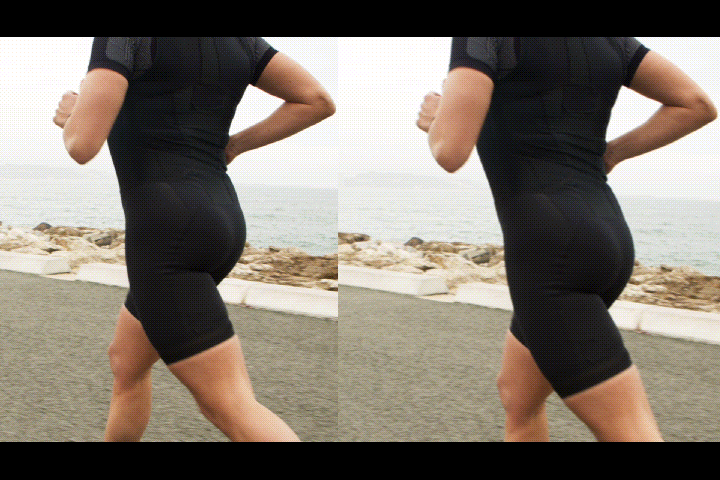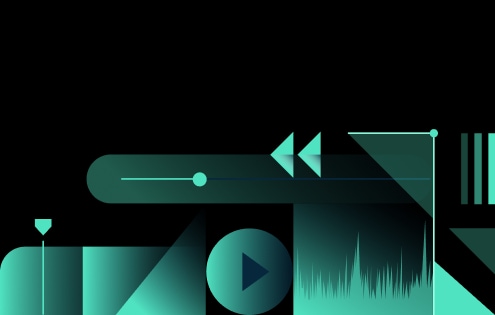In this article
Understanding Tracking Shot
Have you ever seen a dynamic shot in a movie or TV series where the camera is following the subject while they are walking, driving, or performing any type of movement? In some instances, you see a shaky handheld camera following the action, and in others, the camera's movement is fixed, as if it is moving on rails. Well, this type of shot is called a tracking shot because it "tracks" the action.
It is a very effective video recording technique, and today, we will take a deep dive and try to give you everything you need to know about it. Let's start with the definition.
A tracking shot is a video recording technique related to movement. The camera follows the subject physically. As the subject moves through space, so does the camera.
There is usually a pre-defined path that the camera needs to follow. You will see instances where the camera is mounted onto a dolly or a track with stabilizers and those where it is handheld. The goal is to maintain continuous motion with a consistent perspective, keeping the moving subject in focus throughout the scene. It is excellent for increasing engagement and adding dynamics.
The Visual Characteristics of the Tracking Shots
Best Tracking Shots Examples
Take a look at some of the best tracking shots ever recorded in the history of cinema.
Goodfellas (1990) – Copacabana Entrance
Director: Martin Scorsese
This scene is brilliantly shot, planned, and acted out. The main character, Henry, is walking his lady through the back entrance of the Copacabana nightclub. The camera follows them using a long, smooth tracking shot. They go through several locations, but we can always see the character, how effortlessly he walks through the scene, and how everyone is treating him like a VIP. The goal is to let the audience know that Henry's lifestyle is very impressive.
1917 (2019) – Running Through the Battlefield
Director: Sam Mendes
When you think about it, this entire movie is created to look like one continuous tracking shot, which is why many prominent film directors, like Quentin Tarantino, have praised it a lot. In the battlefield scene, the camera follows the soldier through trenches and battlefields, avoiding explosions along the way, and the audience can experience the thrill in real time. When you watch it, you feel like you are right there in the thick of it with the characters.
Oldboy (2003) – Hallway Fight
Director: Park Chan-wook
Here, we have an example of a well-choreographed fight scene, where the camera follows the main character as he fights through a horde of enemies in a small, confined corridor.The camera moves sideways, tracking all the action from left to right. Because we have a continuous tracking shot with no cuts, the action feels authentic, raw, and gritty. This is just like recording a dance choreography. Everything is planned and practiced to perfection.
Birdman (2014) – Backstage and Street Walks
Director: Alejandro G. Iñárritu
Here we have another example that, like the movie 1917, aims to create an entire motion picture with one seemingly continuous tracking shot. However, one amazing scene stands out. In this particular sequence, the main character, Riggan, is locked out of the theatre, loses his clothes, and has to go back in through the front entrance naked, followed by fans everywhere. We can see his mental state at the moment in relation to the overall narrative.
The Shining (1980) – Danny Rides His Tricycle
Director: Stanley Kubrick
Here is a prime example of how an innocent scene with young Danny pedaling through the empty hotel corridors can be horrifying in the right context and with the right musical score. In this scene, the camera tracks the child as he turns corners and glides through the building. The floor and carpet tiles also add a sense of unease as the camera glides over them. The steady movement adds suspense and a very haunting sense of isolation and tension.
What Makes a Good Tracking Shot?
How to Shoot a Good Tracking Shot?
Recording a good tracking shot is no easy feat, but with our easy step-by-step guide, you will have an easier time achieving your goal.
- First, define the purpose of your tracking shot. Is it to add tension, increase immersion, follow a particular rhythm, or follow a specific character?
- Then, plan the movement of your camera. You can do this loosely by drawing a storyboard, but you will have a clear camera path only after you visit the location and calculate the precise camera movements, tilts, and turns.
- The third step concerns your equipment. Here, you need to pick something that will help you realize your vision while keeping your budget restraints intact. You can go for a dolly and track setup, a gimbal, or a rig for handheld shooting.
- Use manual focus and plan the values beforehand. Tracking shots are dynamic, and you will need to adjust the camera focus as the scene unfolds to capture the best shot. Plan this beforehand to avoid mishaps during the recording process.
- Now, it's time to rehearse the shot. Gather the entire crew and practice the shot a few times before the first actual take. Monitor the results and use this opportunity to adjust the lighting and scene composition before you start recording it for real.
When you are finished with these five steps, you will be ready to begin filming. We have a few additional tips for you.
- Record multiple takes of the scene, even if it is perfect on the first try. You want as many options as possible when reviewing the footage later on.
- If, by chance, you were not able to record the scene perfectly, you will need to work on it in post-production. Consider AI tools to resolve small issues quickly.
- Limit background distractions to let the audience focus on the most important aspects of the tracking shot without much effort.
- Unless you are a world-famous director working with A-list actors, avoid long takes. They are very complicated to achieve. Save this for when you get experience.
- Make sure that you have enough foreground elements in the scene to add a sense of depth to it (like passing behind walls, objects, or crowds of people).
If you take all this into consideration, you will get the perfect tracking shot in your project.
When to Use Tracking Shots?
Whenever you have a scene where the character is moving and doing something else, you can use a tracking shot.
Some tracking shots, accompanied by fluid, slow movements and suspenseful music, can add more tension and build a sense of suspense in the scene. Crime movies are also a good genre for which you can use this type of tracking shot.
The Most Common Issues with Tracking Shots
Polish and Enhance Your Tracking Shot Footage to the Next Level
One of the best tools you can use to enhance your tracking shot, improve it, and make it perfect is Filmora. With a massive collection of creative assets, pre-made template variations, and easy tools for basic and advanced video editing tasks, Filmora will turn complex editing projects into something joyful and enjoyable.
One of Filmora's best and most useful functions regarding tracking shots is the AI stabilization feature. Let's learn how to use it.
Fix Unstable Issues with Filmora
Begin your Filmora editing journey by downloading the installation file for Windows and Mac and installing Filmora on your device. After that, open the program, create a new project, and follow the steps below to activate the AI stabilization feature.
Click on Import and proceed to select the tracking video file you want to stabilize.
When the video is uploaded, drag it to the video editing timeline.
Now, go to Video > AI Tools and activate the Stabilization feature. Also, notice the Smoothness slider and adjust it according to your wishes.
That's it. In just three simple steps, you have successfully stabilized your tracking shot. Here's a quick comparison GIF to help you notice the difference. On the left, you will see the original video, while the stabilized video is on the right.




